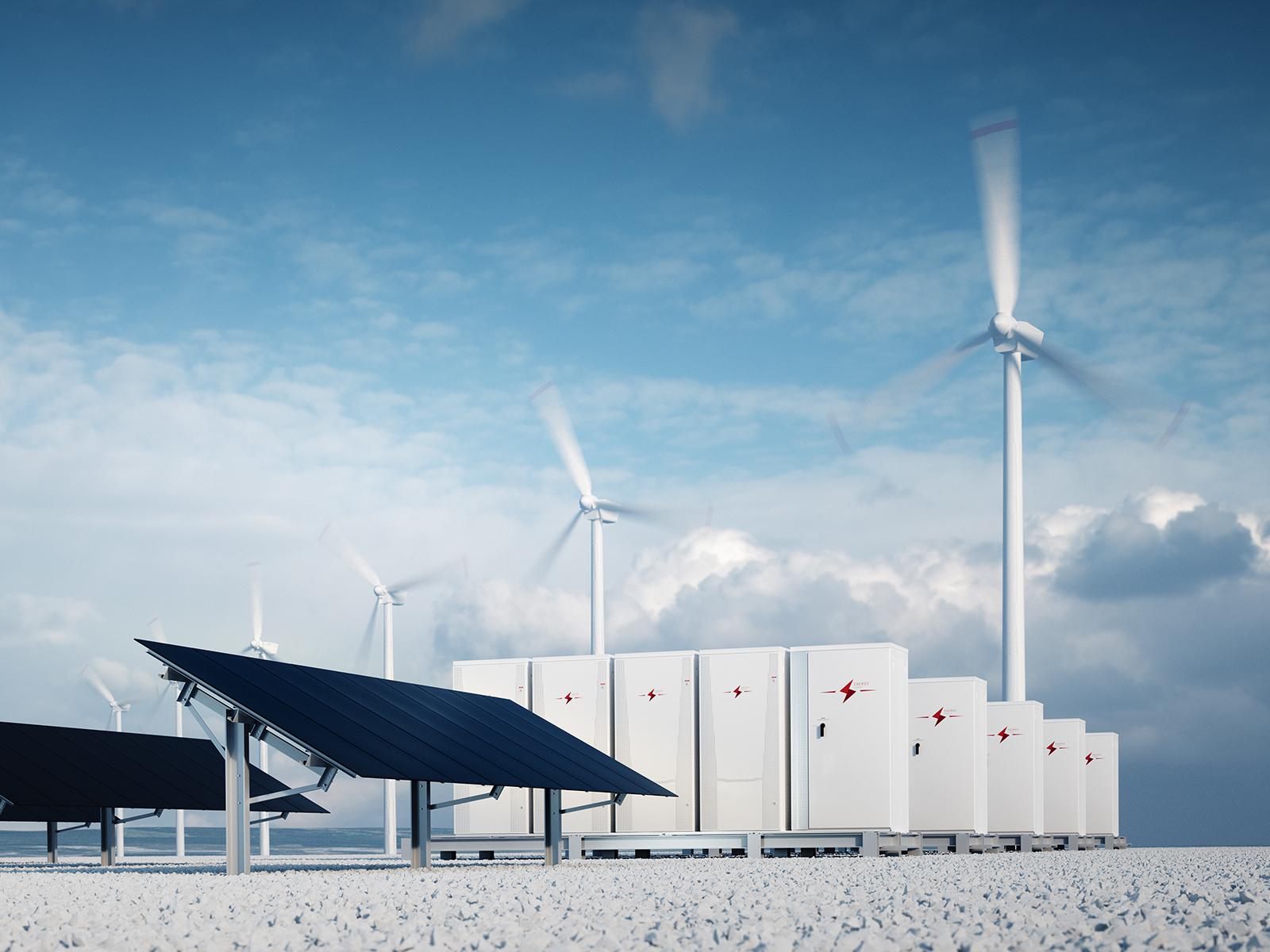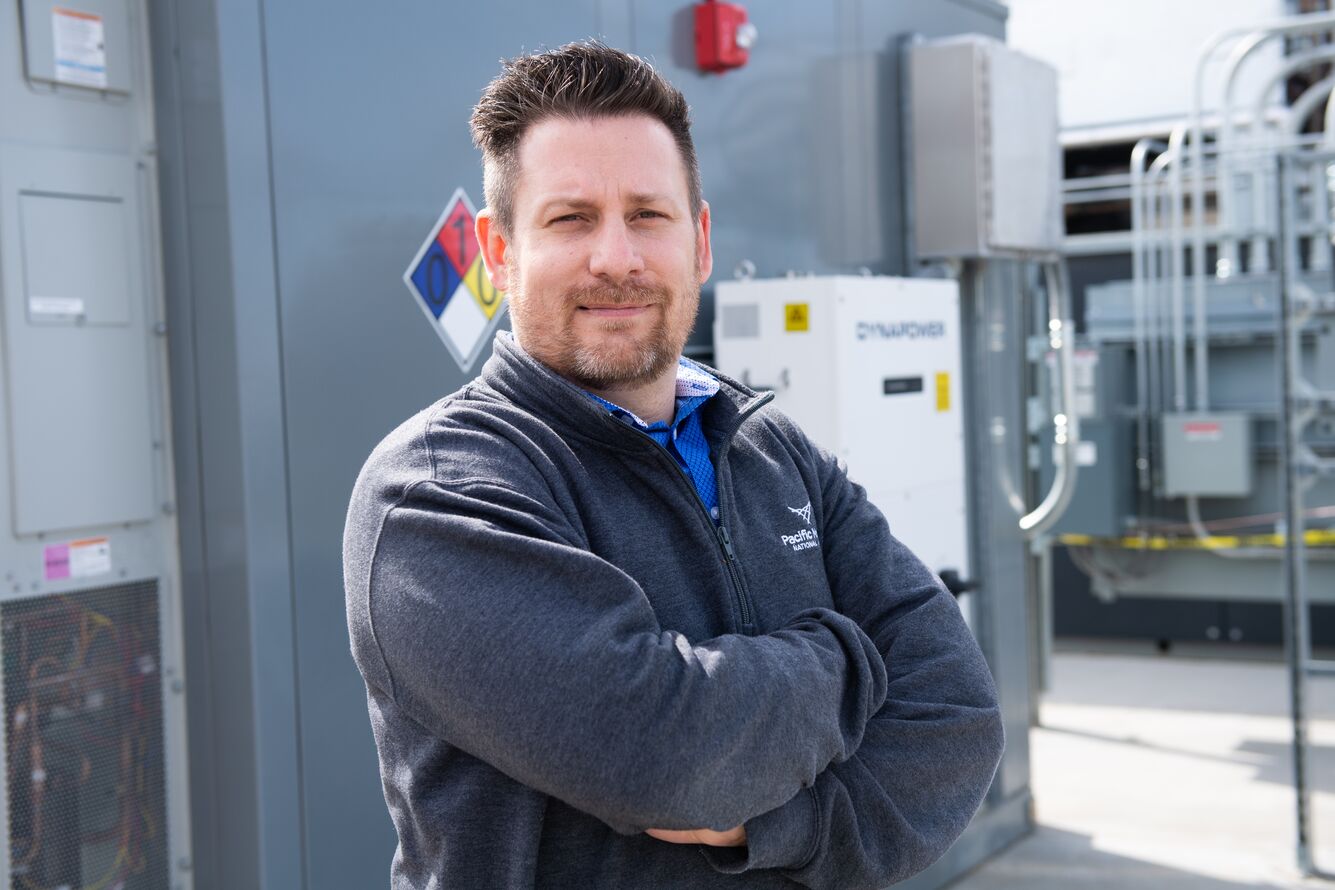Long-Duration Energy Storage: Crucial to a Reliable and Clean Electric Grid
PNNL energy storage experts express need for continued investment in developing and deploying long-duration energy storage

Long-duration energy storage can help drive grid decarbonization and accelerate renewable energy deployment
(Photo courtesy of Malp | Adobe)
Innovation is at the center of solving the world’s greatest challenges, and some great challenges—like a clean electricity grid—require strategic solutions. As the United States modernizes the electric grid with more carbon-free and renewable energy technologies, the complex balance of supply and demand becomes harder to maintain, posing potential risk of damage to grid infrastructure and unplanned outages for customers.
Energy storage is essential for two important reasons: first, it permits flexibility to accommodate variable resources like wind and solar, and second, it will help achieve a resilient and reliable grid.
Pacific Northwest National Laboratory Senior Energy Analyst Jeremy Twitchell, Chief Engineer Di Wu, and Strategic Advisor for Energy Storage Vince Sprenkle were invited to share their views about the role of energy storage in renewable energy integration in The National Academy of Engineering publication, The Bridge. The article, “Energy Storage: A Key Enabler for Renewable Energy,” provides an overview of current energy storage technologies, modeling challenges involved in identifying storage needs, and the importance of continued investment in research and development of long-duration energy storage (LDES) technologies. It was featured in the special edition, Summer Bridge on Engineering the Energy Transition, and was the only contribution specific to energy storage.
“From managing momentary variations in output to shifting energy supply during periods of high demand, energy storage technologies are already enabling renewable energy growth,” Twitchell said. “But as renewable generation continues to grow and climate change places increasing stress on the electric grid, we will need storage technologies that can hold larger amounts of energy and support grid needs over longer periods.”
Where we've been is nowhere close to where we need to be
Historically, grid operators were able to control electricity supply based on the predictability of customer demand and power plants that could be easily ramped up or down. The amount of energy generated by 24-hour thermal power plants, which convert heat energy to electrical energy, was adjusted to meet demand. However, renewable wind and solar energy sources have a variable supply that is dependent on factors like weather and time of day, requiring a new strategy for controlling the electrical output.

LDES technologies can help drive grid decarbonization and accelerate clean energy deployment by having the ability to both withdraw energy from the grid during periods of excess generation and deposit energy during periods of insufficient generation. However, many LDES technologies are yet to be commercially proven.
“Right now, the only commercially proven LDES technology we have is pumped storage hydropower, which still accounts for more than 90 percent of the energy storage capacity we have in the U.S.,” Twitchell said. “But there are only so many places that we can build pumped storage hydropower, so to deploy LDES at the necessary scale, we will need additional technology options.”
In addition to developing LDES technology further, researchers and stakeholders are faced with the challenge of identifying storage needs and creating models to demonstrate optimal use, environmental benefits, and economic potential for the electric grid. This modeling process is complicated by factors like degradation of energy storage systems, grid infrastructure, market structure and rules, variable distribution system capacity and load growth rate, and operational uncertainties associated with wind and solar generation. Despite these challenges, modeling operational uncertainties must be done so grid operators can evaluate the benefits and flexibility of energy storage related to customer demand and variable generation output.
Tools and resources available to make better energy storage decisions
PNNL subject matter experts designed a model selection platform so researchers can review and compare more than 60 energy storage modeling, valuation, and stimulation tools developed by several national laboratories for the U.S. Department of Energy (DOE). The platform will suggest the best-suited tools for modeling value streams based on stakeholder interests.
“There is still work to be done to develop and deploy the energy storage solutions that grid decarbonization will require,” Twitchell said. “But the DOE, the national laboratories, and industry are coming together in an unprecedented fashion to meet the challenge.”
PNNL is an active participant in several DOE-sponsored energy storage research and development programs, including the Energy Storage Grand Challenge and the Long-Duration Storage Shot. PNNL will also be home to the DOE Office of Electricity Grid Storage Launchpad (GSL), a facility designed to work with industry and accelerate the development and validation of new energy storage technologies. The GSL will open for operations in 2024.
Published: August 17, 2023